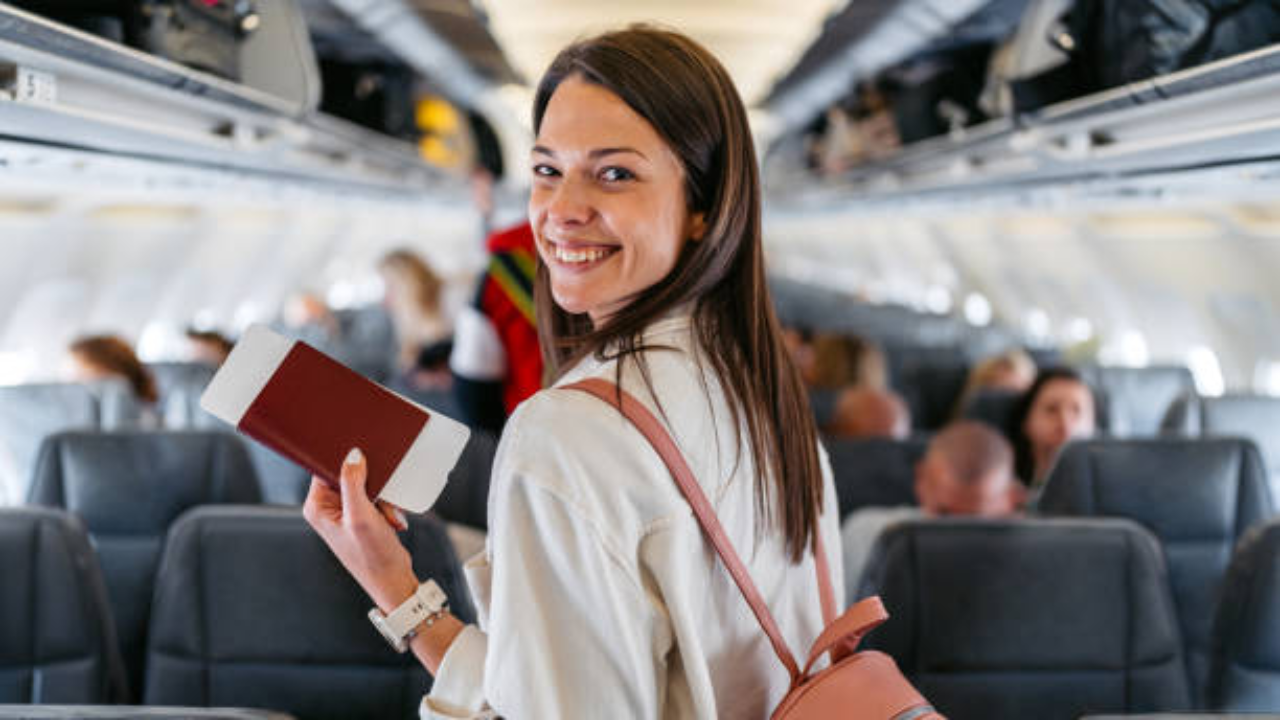Diabetes Dietitian Reveals Easy Travel Tips

Most people with diabetes mess this up when they fly.
Let’s set the scene: you’ve just finished a long flight. You land. You’re super excited to explore your destination. You head to dinner…and suddenly, your blood sugar is way higher than you expected. No dessert. No huge carb fest. Just an unexpected spike.
The culprit? You didn’t adjust your insulin pump clock or time your long-acting insulin correctly.
As a Diabetes Dietitian and Diabetes Educator, this is the mistake all the time. But the good news is, with a few smart strategies, you can keep your blood sugar stable while traveling and actually enjoy your trip without unnecessary stress.
Whether you live with Type 1 Diabetes (T1D) or Type 2 Diabetes (T2D), these practical tips will help you unlock smoother travels and better blood sugar management.
Why Travel Throws Off Your Blood Sugar
- Travel messes with your normal routine in subtle ways
- Time zone changes shift your basal insulin schedules.
- Airplane food often comes at odd times and may have hidden carbs.
- Increased activity (or long periods of sitting) affects insulin sensitivity
- Stress hormones and dehydration can cause unexpected highs.
Understanding these factors is step one. Working with a T1D dietitian or T2D dietitian can help you tailor a plan for your unique needs, especially if you’re using T1D meal planning strategies or carb counting for diabetes to manage your numbers.
1. Change Your Pump Clock as Soon as You Land
If you use an insulin pump, change the pump clock to local time immediately upon landing, especially if you’ve traveled more than two time zones away. This simple step ensures your basal rates and insulin-to-carb ratios stay synced with your new daily rhythm.
Pro tip: Set an alarm on your phone as a reminder during the flight, so you don’t forget in the excitement of arrival.
2. Time Your Long-Acting Insulin Strategically
If you take long-acting insulin, try to keep your dosing schedule as close as possible to your normal time. It’s usually safer to dose slightly early than to let it lapse for hours, which can leave you “uncovered” and lead to dangerous highs.
This small shift can make a big difference in how you feel those first 24 hours abroad.
3. Grocery Shop on a Budget Once You Arrive
Eating every meal at restaurants can be tough on both blood sugar and budget. A quick grocery store trip allows you to stock up on staples like:
- Fresh fruit and veggies
- Yogurt or cottage cheese
- Sandwich ingredients
- Bottled water to stay hydrated
Budget-friendly groceries give you flexibility and more consistent carb options, something every Type 1 diabetes dietitian and Type 2 diabetes dietitian recommends.
Ask the Diabetes Dietitian
Q: How should I store insulin while flying?
Keep it in a carry-on with a cooling case. Never check insulin; it can freeze in cargo.
Q: Do I need to bring extra supplies?
Yes! Always pack double your usual amount of insulin, infusion sets, sensors, and test strips. Delays happen.
Q: What about airport security with pumps or CGMs?
Most devices are fine through metal detectors. Avoid full-body scanners when possible ask for a pat-down. Check your device manufacturer’s recommendations before flying.
These internal resources dive deeper into practical strategies for daily management, whether you live with T1D or T2D.
Traveling with diabetes doesn’t have to be stressful. With proven strategies, a solid plan, and guidance from a qualified diabetes dietitian, you can explore the world confidently without letting blood sugar swings steal the spotlight.
Ready to feel confident on your next flight? Learn now.
Fly Stress-Free with Diabetes! Grab your FREE Diabetes Travel Checklist and travel confidently every time.

